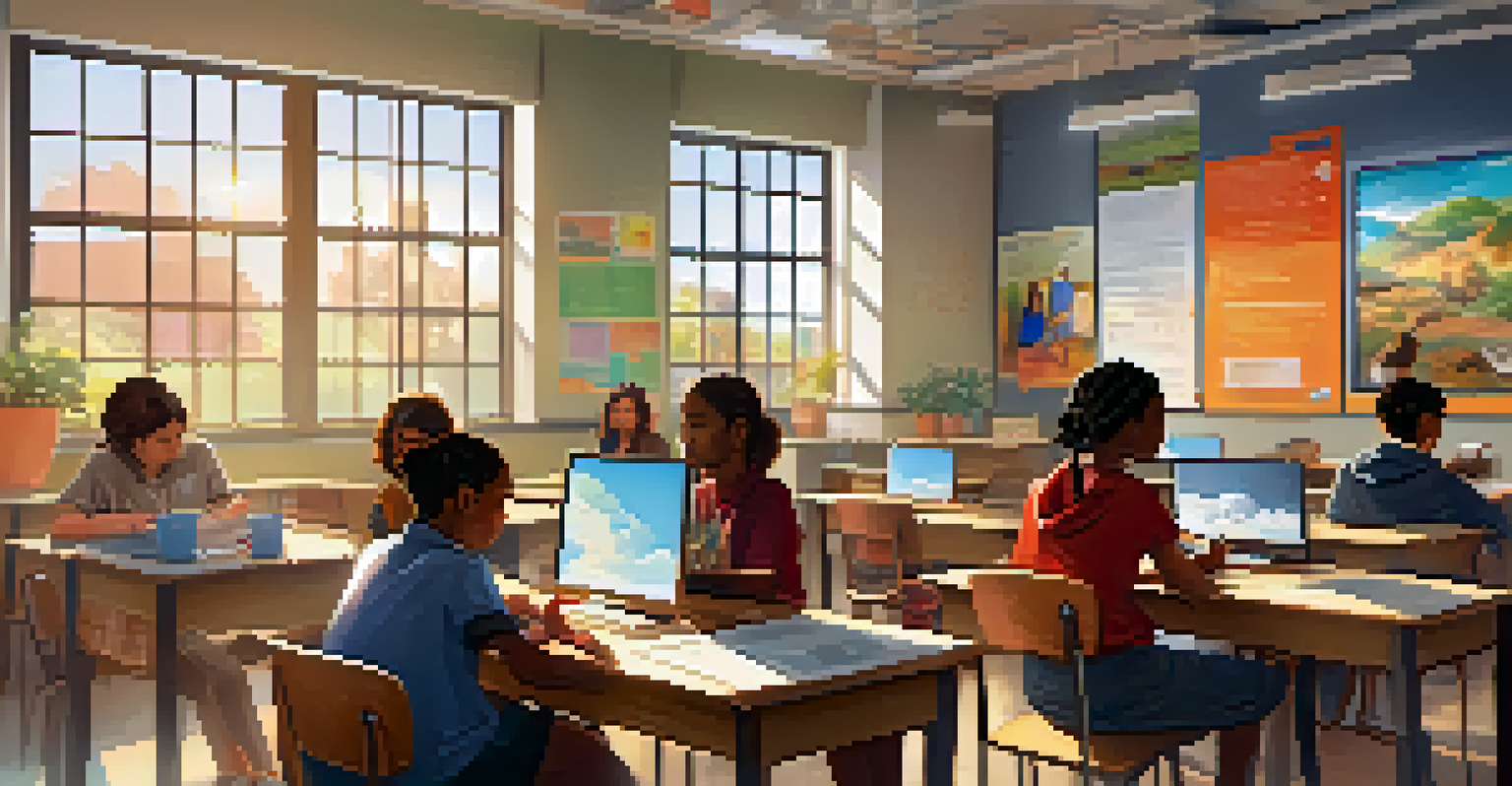The Significance of Timely Feedback in Blended Assessments

What Are Blended Assessments and Their Benefits?
Blended assessments combine traditional methods with digital tools, creating a versatile learning environment. This approach allows educators to adapt to different learning styles and needs, maximizing student engagement. By integrating both online and face-to-face evaluations, these assessments can better reflect a learner's true capabilities.
Feedback is the breakfast of champions.
For instance, a student might excel in a practical task but struggle with written tests. Blended assessments allow for a more rounded evaluation, providing insights that singular methods may miss. Ultimately, this flexibility not only enhances learning but also promotes a deeper understanding of the material.
Moreover, blended assessments help prepare students for real-world scenarios where skills must be applied in various contexts. With technology being a significant part of modern life, familiarizing students with these tools during assessments is invaluable.
The Role of Feedback in the Learning Process
Feedback is the compass that guides learners through their educational journey. It provides essential insights into what they are doing well and where they can improve. Without timely feedback, students may feel lost or unsure about their progress, which can hinder their motivation.

Imagine learning to ride a bike; immediate feedback from a friend can help you correct your balance and technique. Similarly, in academic settings, prompt feedback allows students to adjust their learning strategies effectively. This process not only supports skill development but also reinforces positive behaviors.
Blended Assessments Enhance Learning
Blended assessments combine traditional and digital methods, catering to diverse learning styles and improving student engagement.
Additionally, timely feedback fosters a growth mindset, encouraging students to view challenges as opportunities for improvement. When learners receive constructive comments quickly, they are more likely to take action and enhance their understanding of the subject matter.
Why Timeliness Matters in Feedback Delivery
The timing of feedback can greatly influence its effectiveness. Research shows that the sooner students receive feedback after completing an assessment, the more likely they are to retain and apply the information. Immediate feedback helps bridge the gap between learning and correction, making the educational experience much more impactful.
The only real mistake is the one from which we learn nothing.
Consider a scenario where a student submits an assignment but receives feedback weeks later. By that time, they may have moved on to new topics, making it harder to connect the feedback to their learning. Timeliness helps maintain relevance and ensures that students can act upon the suggestions while the material is still fresh in their minds.
Furthermore, timely feedback contributes to a positive classroom atmosphere. When students see that their efforts are acknowledged promptly, it fosters a sense of validation and encourages them to engage more actively.
Creating a Feedback Loop in Blended Assessments
A feedback loop is an essential component of effective blended assessments. This cycle involves providing feedback, allowing for reflection, and then encouraging adjustments based on that feedback. By creating this loop, educators can enhance student learning and ensure continuous improvement.
For example, after receiving feedback on a project, students might revise their work, integrating suggestions to enhance their understanding. This iterative process not only helps them master the material but also builds confidence as they see their progress over time.
Timely Feedback Boosts Student Success
Immediate feedback helps students retain information and apply it effectively, making the learning experience more impactful.
Moreover, fostering a culture of feedback encourages open communication between students and educators. When students feel comfortable discussing their challenges and successes, it cultivates a supportive learning environment that benefits everyone involved.
The Impact of Technology on Feedback in Assessments
Technology plays a pivotal role in enhancing the feedback process in blended assessments. With various digital tools available, educators can provide instant feedback through online platforms, allowing for a more interactive experience. These tools often include features like comments, suggestions, and even video feedback, making the process more engaging.
Consider a scenario where a teacher uses a learning management system to provide feedback on assignments. Students can receive personalized comments and resources tailored to their needs, making the feedback more relevant and actionable. This level of customization can significantly improve the learning experience.
Additionally, technology allows for tracking progress over time, enabling both teachers and students to visualize improvements. By analyzing patterns in feedback, educators can tailor their approach, ensuring that each student's unique learning journey is supported effectively.
Strategies for Providing Effective Timely Feedback
To maximize the benefits of timely feedback, educators can adopt several strategies. First, setting clear expectations around feedback timelines can help students understand when they can expect responses. This transparency builds trust and promotes accountability in the learning process.
Additionally, using rubrics can streamline the feedback process, providing clear criteria for assessment. This way, students can see exactly where they excelled and where improvement is needed. Rubrics also make it easier for educators to deliver consistent, unbiased feedback.
Technology Transforms Feedback Delivery
Digital tools facilitate instant, personalized feedback, enhancing the educational experience and supporting individual learning journeys.
Finally, incorporating peer feedback can enhance the learning experience. By allowing students to review each other's work, they not only learn from their peers but also develop critical thinking skills as they analyze different perspectives.
The Future of Feedback in Blended Learning Environments
As education continues to evolve, the role of feedback in blended assessments will likely become even more significant. With advancements in artificial intelligence and data analytics, personalized feedback could become a norm. This means that feedback may not only be timely but also tailored to individual learning paths.
Imagine a future where algorithms identify a student's strengths and weaknesses in real-time, providing instant feedback based on their performance. This level of personalization can empower educators to focus their efforts where they are needed most, enhancing student outcomes.

Moreover, as blended learning environments become more prevalent, the emphasis on creating supportive feedback cultures will grow. Establishing strong feedback mechanisms will be essential to ensuring that all students receive the guidance they need to succeed in an increasingly complex educational landscape.